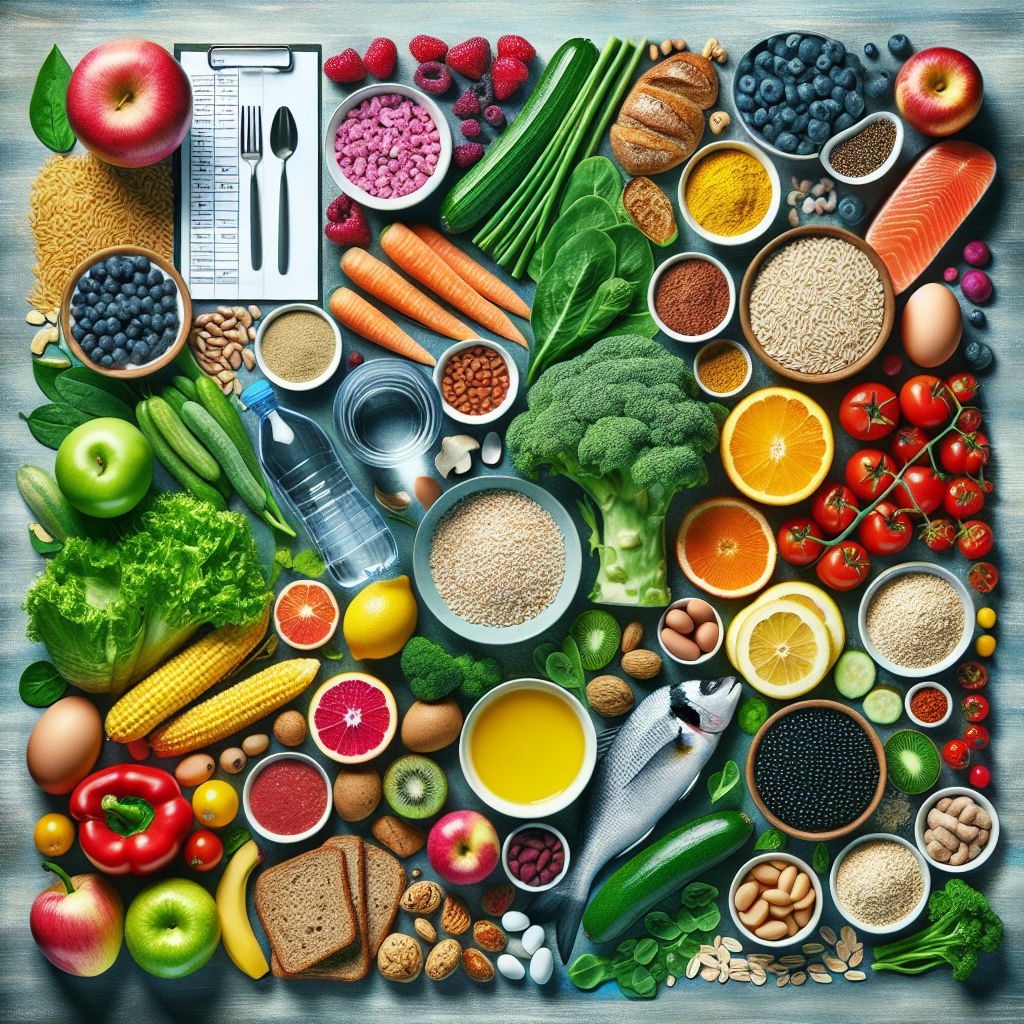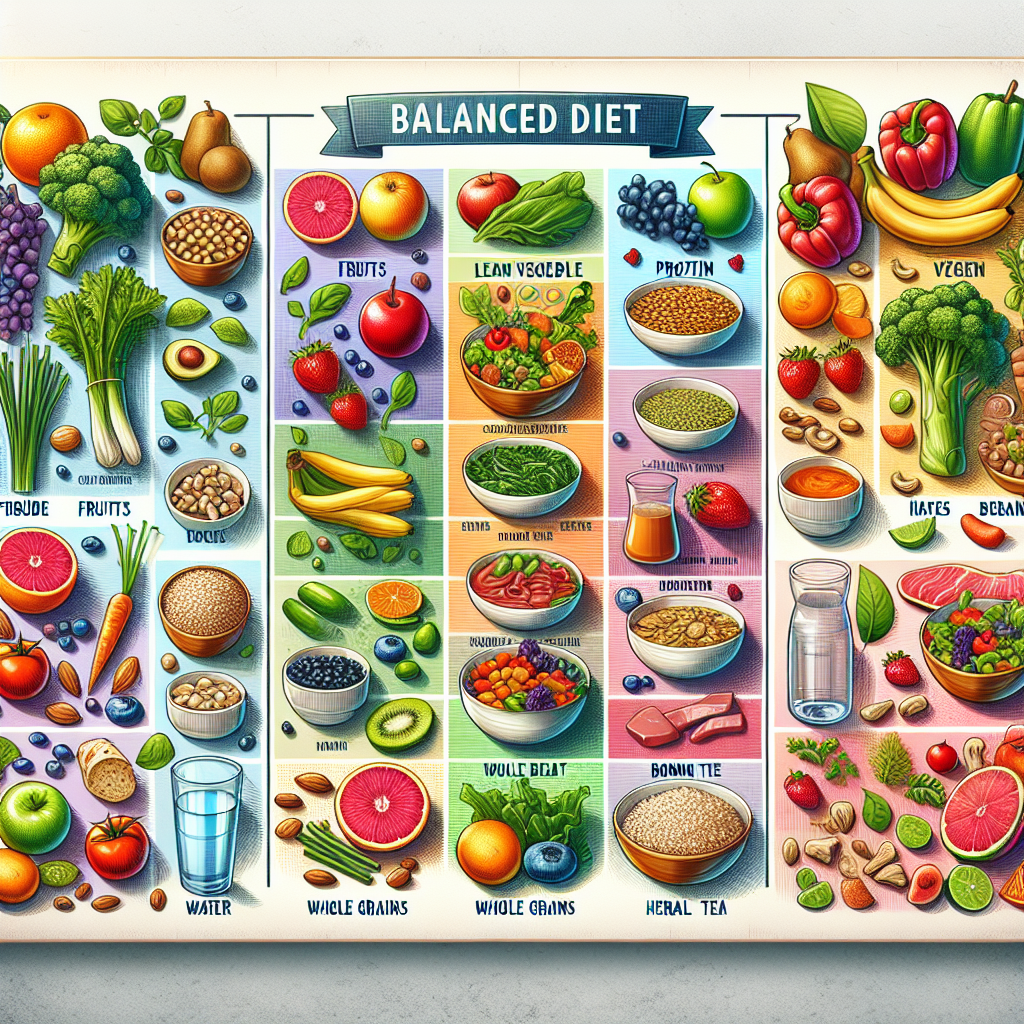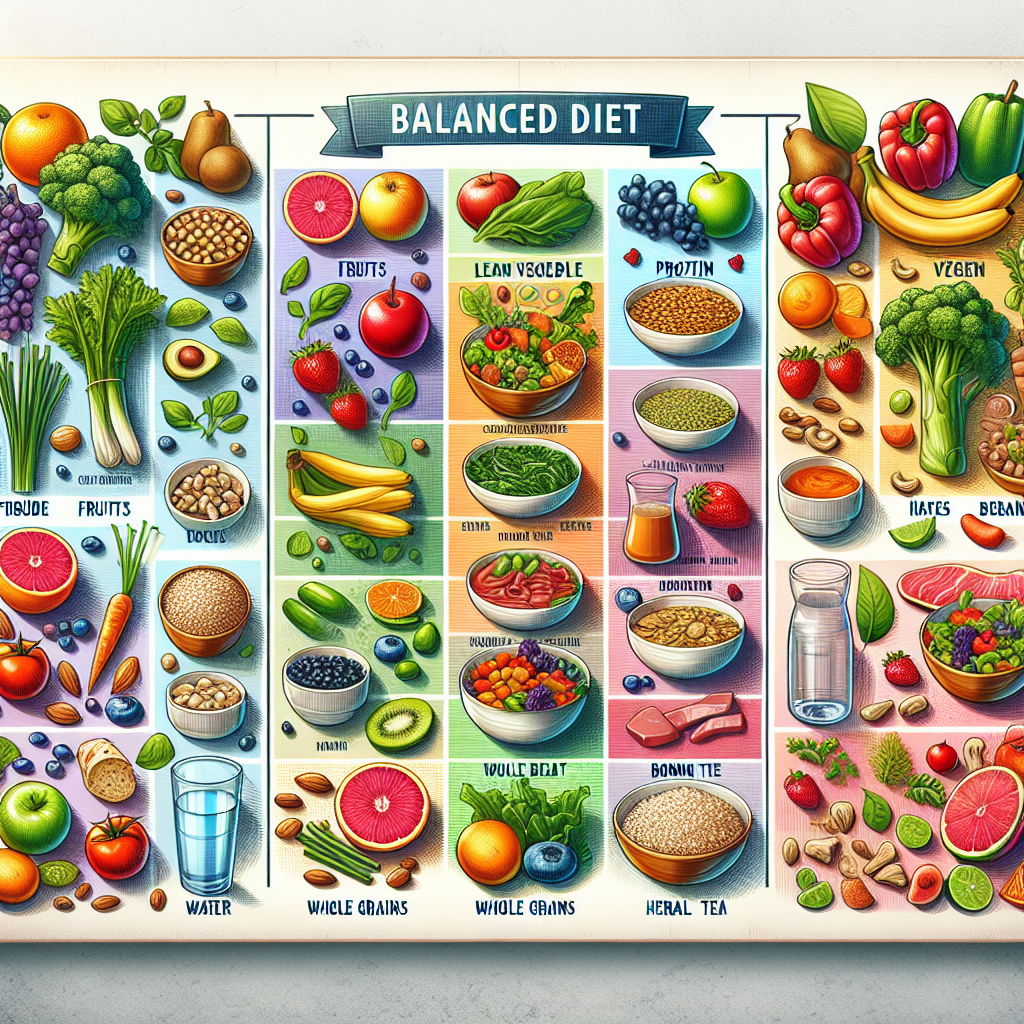What Are The Key Elements Of A Healthy Meal Plan? Eating a balanced and nutritious diet is crucial for maintaining good health, but knowing what exactly constitutes a healthy meal plan can be overwhelming. In this article, we will explore the key elements that make up a well-rounded and wholesome meal plan. From incorporating a variety of food groups to controlling portion sizes, you will discover practical tips and advice to help you create a healthy meal plan that nourishes both your body and mind. So, whether you are looking to lose weight, improve your energy levels, or simply lead a healthier lifestyle, let’s dive into the essential components of a healthy meal plan.
1. Macronutrients
1.1 Carbohydrates
Carbohydrates are an essential macronutrient that provides the body with energy. They are found in foods such as grains, fruits, vegetables, and dairy products. Including carbohydrates in your meal plan is important for fueling your body and maintaining optimal energy levels throughout the day. However, it is essential to choose complex carbohydrates, such as whole grains and fiber-rich fruits and vegetables, over refined carbohydrates like white bread and sugary snacks, as they provide more sustained energy and important nutrients.
1.2 Protein
Protein is another crucial macronutrient that plays a vital role in building and repairing tissues, supporting immune function, and maintaining a healthy metabolism. Including adequate protein in your meal plan is essential for overall health and well-being. Good sources of protein include lean meats, poultry, fish, eggs, dairy products, legumes, and tofu. Aim to include a source of protein with each meal and snack to ensure you meet your daily protein needs.
1.3 Fats
Contrary to popular belief, not all fats are bad for you. In fact, fats are an important part of a healthy meal plan. Healthy fats, such as monounsaturated and polyunsaturated fats found in nuts, seeds, avocados, and fatty fish, are essential for brain function, hormone production, and nutrient absorption. Including these healthy fats in your diet can help promote satiety, improve heart health, and support overall well-being. However, it is important to consume fats in moderation, as they are calorie-dense. Opt for sources of healthy fats and limit saturated and trans fats found in fried and processed foods.
2. Micronutrients
2.1 Vitamins
Vitamins are organic compounds that are essential for normal cell function, growth, and development. They help regulate bodily processes such as growth, metabolism, and immunity. Including a variety of fruits, vegetables, whole grains, and lean proteins in your meal plan can help ensure you are getting a wide range of vitamins. While it’s best to obtain vitamins from whole foods, sometimes supplementation may be necessary if you have specific nutrient deficiencies or medical conditions. Consult with a healthcare professional before starting any new supplements.
2.2 Minerals
Minerals are essential for various bodily functions such as bone health, fluid balance, and nerve function. Examples of minerals include calcium, iron, zinc, magnesium, and potassium. Including a variety of foods in your meal plan can ensure you are getting a range of minerals. Dairy products, leafy green vegetables, nuts, seeds, and lean meats are excellent sources of minerals. As with vitamins, some individuals may need to consider supplementation if they have specific deficiencies or medical conditions. Seek guidance from a healthcare professional before starting any new supplements.

3. Portion Control
3.1 Calorie Balance
Maintaining a healthy weight requires a balance between calorie intake and expenditure. It is essential to consume an appropriate number of calories for your individual needs. Consuming more calories than your body requires can lead to weight gain, while consuming fewer calories can result in weight loss. Understanding your body’s unique energy needs and balancing your calorie intake with physical activity is key to achieving and maintaining a healthy weight.
3.2 Serving Sizes
Portion control is equally important in maintaining a healthy meal plan. Understanding appropriate serving sizes can help prevent overeating and ensure you are consuming adequate nutrients. Familiarize yourself with recommended portion sizes for different food groups, such as grains, proteins, fruits, vegetables, and fats. Utilizing measuring cups, food scales, or visual portion estimates can help you maintain portion control and avoid excessive calorie intake.
4. Whole Foods
4.1 Fruits and Vegetables
Including a variety of fruits and vegetables in your meal plan is essential for obtaining essential vitamins, minerals, and fiber. Aim to fill half of your plate with colorful fruits and vegetables at each meal. These nutrient-dense foods not only provide essential nutrients but also contribute to feelings of fullness and satisfaction. Experiment with different types of fruits and vegetables to add color, flavor, and texture to your meals.
4.2 Whole Grains
Whole grains, such as brown rice, quinoa, oats, and whole wheat bread, are an important source of complex carbohydrates and fiber. Unlike refined grains, which have been stripped of their bran and germ, whole grains retain their natural nutrients and fiber content. Including whole grains in your meal plan can provide sustained energy, aid digestion, and contribute to overall health. Replace refined grains, such as white bread and pasta, with whole grain alternatives to maximize the nutritional value of your meals.
4.3 Lean Proteins
Lean proteins are an important component of a healthy meal plan. They are low in saturated fats and provide essential amino acids necessary for muscle repair and growth. Include sources of lean protein such as chicken breast, turkey, fish, tofu, legumes, and low-fat dairy products in your meals. Opt for cooking methods such as grilling, baking, or roasting rather than frying to reduce unnecessary added fats and calories.

5. Adequate Hydration
5.1 Importance of Water
Water is essential for maintaining optimal bodily functions. It helps regulate body temperature, aids digestion, lubricates joints, and transports nutrients throughout the body. Including adequate amounts of water as part of your meal plan is crucial for overall health and well-being.
5.2 Fluid Intake Recommendations
While individual fluid requirements may vary based on factors such as age, sex, activity level, and climate, a general guideline is to consume around eight cups (64 ounces) of water per day. Other sources of fluids, such as herbal tea, infused water, and low-sugar beverages, can also contribute to your overall fluid intake. It’s important to listen to your body’s thirst cues and increase fluid intake when necessary, especially during physical activity or in hot weather.
6. Balanced Plate
6.1 MyPlate Method
The MyPlate method is a helpful tool for creating balanced meals. It emphasizes filling half of your plate with fruits and vegetables, a quarter with lean proteins, and the remaining quarter with whole grains. It also encourages the inclusion of a small amount of healthy fats and dairy products. Following the MyPlate method can help ensure you are obtaining a variety of nutrients from different food groups and maintaining a balanced meal plan.
6.2 Balanced Macronutrient Ratios
Achieving a balance of macronutrients, such as carbohydrates, protein, and fats, is key to a healthy meal plan. The appropriate macronutrient ratio may vary depending on individual needs and goals. Consulting with a registered dietitian or nutritionist can help determine the ideal macronutrient distribution for your specific needs.
7. Sufficient Fiber
7.1 Benefits of Fiber
Fiber is an important component of a healthy meal plan as it aids digestion, promotes satiety, regulates blood sugar levels, and supports heart health. Including fiber-rich foods such as fruits, vegetables, whole grains, legumes, nuts, and seeds in your meals can help ensure you meet your daily fiber requirements. Aim for at least 25-30 grams of fiber per day for optimal health.
7.2 Fiber-rich Foods
Some excellent sources of fiber include raspberries, avocados, broccoli, lentils, chia seeds, and almonds. Incorporating these foods into your meal plan can add flavor, texture, and nutritional value to your meals while promoting digestive health.
8. Limited Added Sugars
8.1 Health Risks of Excessive Sugar Intake
Excessive consumption of added sugars has been linked to various health risks such as obesity, type 2 diabetes, heart disease, and tooth decay. While some naturally occurring sugars in fruits and dairy products are acceptable, it is important to limit added sugars in your diet. Added sugars can be found in processed foods, sugary beverages, sweets, and desserts. Opt for whole foods and prepare meals at home to minimize your intake of added sugars.
8.2 Alternative Sweeteners
Instead of relying on added sugars, consider using natural sweeteners such as honey, maple syrup, or stevia to add sweetness to your meals and beverages. These alternative sweeteners provide fewer calories and can be used in moderation as part of a healthy meal plan.
9. Mindful Eating
9.1 Slow and Mindful Eating
Practicing mindful eating involves being present and fully engaged with your eating experience. It encourages conscious and deliberate choices while savoring the flavors, smells, and textures of your food. Eating slowly, chewing thoroughly, and paying attention to hunger and fullness cues can help prevent overeating and enhance enjoyment of meals.
9.2 Listening to Hunger and Fullness Cues
Listening to your body’s hunger and fullness cues is an important aspect of mindful eating. Before eating, assess your level of hunger and aim to eat when you are moderately hungry, rather than ravenous. During meals, pay attention to your body’s signals of fullness and stop eating when you feel satisfied, but not overly full. This can help prevent overeating and promote a healthier relationship with food.
10. Individualized Approach
10.1 Consideration of Dietary Restrictions
When creating a healthy meal plan, it is important to consider any dietary restrictions or allergies you may have. Whether it’s following a vegetarian, vegan, gluten-free, or dairy-free diet, there are plenty of options available to meet your specific needs. Consult with a registered dietitian or nutritionist to ensure you are obtaining all necessary nutrients while adhering to your dietary restrictions.
10.2 Cultural and Personal Preferences
Creating a healthy meal plan is not a one-size-fits-all approach. Different cultures and individual preferences play a significant role in determining what foods you enjoy and feel satisfied with. Consider your cultural background and personal preferences when creating your meal plan. Including foods that you enjoy and align with your cultural practices can enhance the sustainability and enjoyment of your healthy eating habits.
Conclusion What Are The Key Elements Of A Healthy Meal Plan?
In conclusion, a healthy meal plan should include a balance of macronutrients, such as carbohydrates, proteins, and fats, along with a variety of micronutrients from fruits, vegetables, whole grains, and lean proteins. Portion control, adequate hydration, and mindful eating are also essential components of a healthy meal plan. Individual needs and preferences should be taken into consideration to create a personalized and sustainable approach to healthy eating. By incorporating these key elements into your meal plan, you can support your overall health and well-being.
